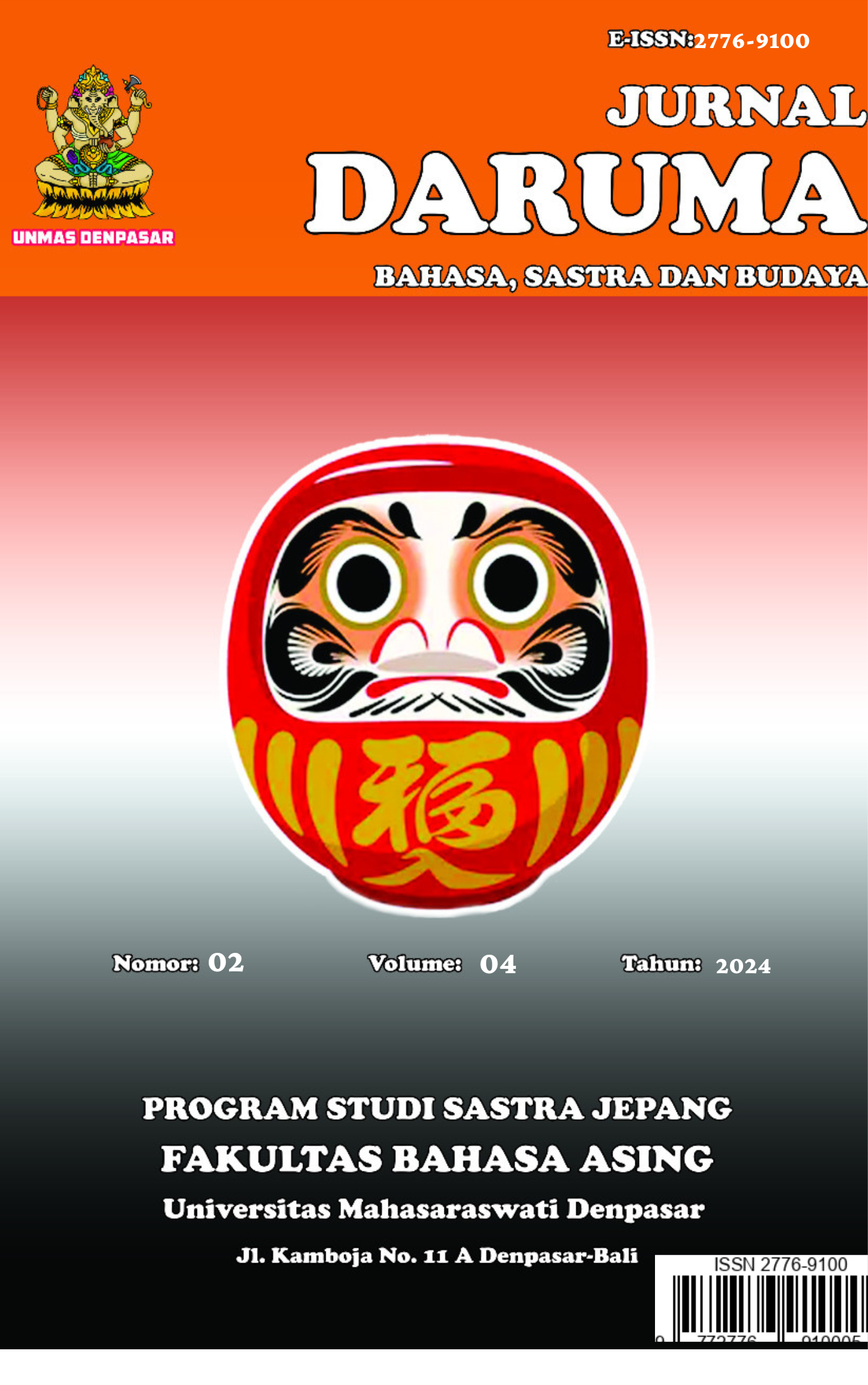PENGGUNAAN JARGON DALAM BELA DIRI AIKIDOU JEPANG DI MEDIA SOSIAL INSTAGRAM
Keywords:
Keywords: Aikidou, jargon, form, meaningAbstract
Abstract
This study aims to understand the significance of the forms and meanings of Aikido martial arts jargon on Instagram. Jargon refers to specialized vocabulary used within a particular field, and due to its very specific forms and meanings, it is often not understood by those outside the field. Data was collected from words and texts on Instagram through two accounts: Aiki.Master with 105 thousand followers and Bulungan_aikido with 28.2 thousand followers. A qualitative descriptive method was employed to analyze the collected data and identify specific terms or phrases frequently used by Japanese Aikido practitioners. Data analysis utilized Halligan's (2004) theory of jargon formation and Leech's (1981) theory of meaning. The analysis identified five Aikido jargon terms on Instagram, each with distinct forms and meanings, including both denotative and connotative aspects. The findings illustrate how Aikido jargon is not only formed through training practices but also reflects variations in meaning depending on the context of its use within the Aikido community.
References
Rujukan
Journal
Gaby, F., & Hikmaharyanti, P. D. A. (2024). Jargon on Instagram Features. ELYSIAN JOURNAL: English Literature, Linguistics and Translation Studies, 4(1), 62-71.
Prasaja, B. D. A. W. (2015). An Analysis Of Jargons Used In Japan Culture Daisuki Event Organizer (Doctoral dissertation, Universitas Brawijaya).
Setyowati, P. A., & Indrawati, D. JARGON PENGGEMAR ANIME PADA AKUN AUTOBASE TWITTER@ animefess_.
Wakari, R. B. (2019). Penggunaan Jargon di Kalangan Waria Kota Bitung. Kajian Linguistik, 5(1).
Wulandari, A. (2016). Penggunaan jargon oleh komunitas chatting whatsapp grup. Transformatika: Jurnal Bahasa, Sastra, dan Pengajarannya, 12(2), 60-72.
Book
Leech, G. (1981). Semantics: The Study of Meaning. Penguin Books.
Ratti, O., & Westbrook, A. (2012). Aikido and the Dynamic Sphere. Tuttle Publishing.
Sudaryanto. (1993). Metode dan Aneka Teknik Analisis Bahasa. Duta Wacana University Press.
Westbrook, A., & Ratti, O. (2012). Aikido and the dynamic sphere: An illustrated introduction. Tuttle Publishing.
Reference
AiKiDoJuTaiDoKan. (2013). Aikido terms and definitions. AiKiDoJuTaiDoKan. Retrieved from https://www.aikidojutaidokan.gr/?page_id=991
Cahyono, H. (2018, December 21). Juru bahasa bukanlah kamus berjalan. Hanif Cahyono. Retrieved from https://hanifcahyono.com/2018/12/21/juru-bahasa-bukanlah-kamus-berjalan/
Laura, R. (2021, December). Semantik: Jenis-Jenis Makna Geoffrey Leech, Retrieved from https://ratukemalalaura.blogspot.com/2021/12/semantik-jenis-jenis-makna.html
Rahma, D. F. (2021, July 22). Jargon Adalah: Pengertian dan Contoh Penggunaannya dalam Berbagai Bidang. IDN Times. Retrieved from https://www.idntimes.com/life/education/dian-rahma-fika-alnina-1/jargon-adalah
Weblio. (n.d.). 専門用語. Weblio. Retrieved August 12, 2024, from https://www.weblio.jp/content/%E5%B0%82%E9%96%80%E7%94%A8%E8%AA%9E
Widiyantoro, A. (2013, June 11). Variasi Bahasa Slang dan Jargon. Widiyantoro Agung PBSI. Retrieved from https://widiyantoroagungpbsi05.wordpress.com/2013/06/11/variasi-bahasa-slang-dan-jargon/





